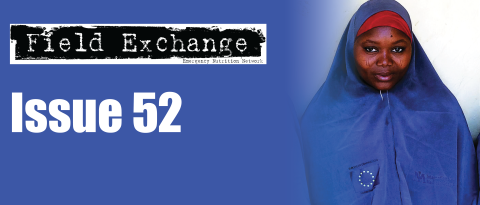Letter
Dear Editors
This issue of Field Exchange summarises an article that I authored (The 2001-03 Famine and the Dynamics of HIV in Malawi: a Natural Experiment) which suggests that the Famine had much wider impacts than currently understood. In rural areas, HIV prevalence was found to have increased through the Famine and most sharply in districts where hunger was greatest. This is consistent with contemporary accounts of women and girls being pushed further into survival sex to provide food for their families. In urban areas, HIV prevalence was found to have decreased through the Famine and most sharply where hunger in the surrounding rural district was greatest. Difficult to make sense of at first, the finding is consistent with accounts from the time, of people migrating in search of food and work to towns and cities and to less affected rural areas. Because HIV prevalence was lower in rural villages than in the towns and cities, the more rural women and girls were pushed by hunger into moving, the more HIV prevalence would fall in the urban places where they landed. The article suggests that the migrants, who were mostly young and poorly educated, were at greater risk of HIV in this new setting than they had been in their villages.
This study is of more than historical interest. In Malawi and the southern African region, now, as 15 years ago, food prices are rising steeply after failed harvests in the wake of flooding and drought attributed to El Niño. Reports are coming in of increasing numbers of people resorting to extreme coping measures such as survival sex. History never repeats itself verbatim but the article and the accounts it drew on can serve as a baseline against which change can be assessed. Are Malawians now more resilient to climatic shocks? Specifically, is the response of institutions – at all levels – to rising hunger better prepared and informed than it was in 2001-03? Have the structural features of economy and livelihood altered so that people have more diverse and robust options to fall back on when the main harvest and the principle staple – maize – fails?
In late 2001, I met a group of young women near Zomba after a village meeting that had been considering what could be done to counter the growing crisis. They had presented a plan to grow vegetables to sell to a nearby college and asked for the leaders’ support in obtaining a treadle pump from a Ministry programme. They were unsuccessful. One woman recounted that after the last meeting, she had been offered 30 kwacha for sex. Another said she had been offered 25 kwacha. “Screwing to die”, they called it. For them, the links between growing food and guarding their own and their family’s health were crystal clear. They and possibly their daughters might ask: Are our efforts now better supported by the village and the Ministry? That is the hard face of both resilience and accountability.
We have to learn better and quicker from disasters and extreme events more generally because they are likely to become more frequent and damaging. One of the advantages of a natural experiment at scale, such as the article presents, is that the “intervention” (the Famine) and its context, as well as its outcomes and at least some of its impacts, are public knowledge and a shared experience. The humanitarian sector has developed something of a habit of reflection using tools such as After Action Reviews. For resilience to really mean something, this kind of reflection has to be widened to embrace development and broadened to involve the many actors who contribute to it.
Yours,
Michael Loevinsohn


